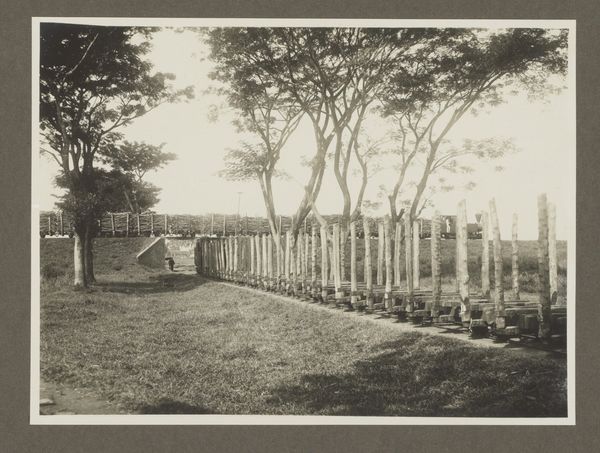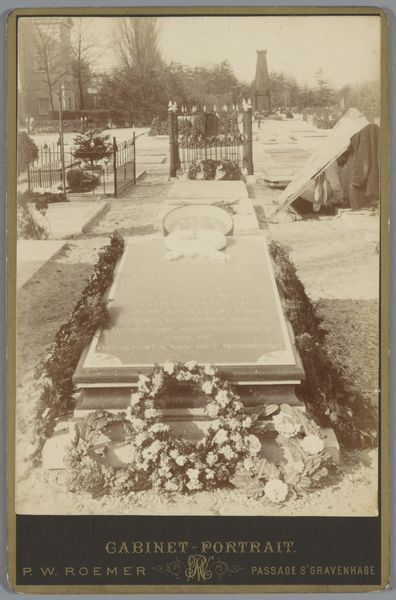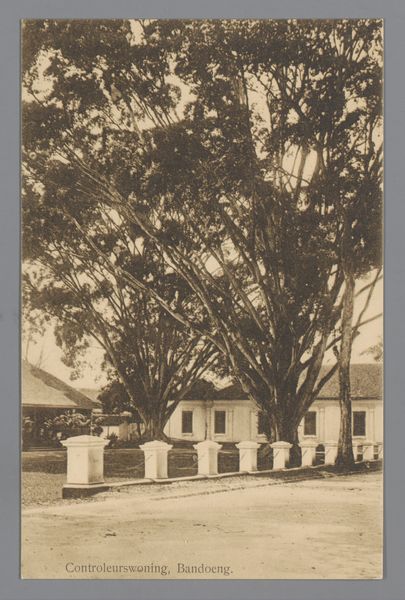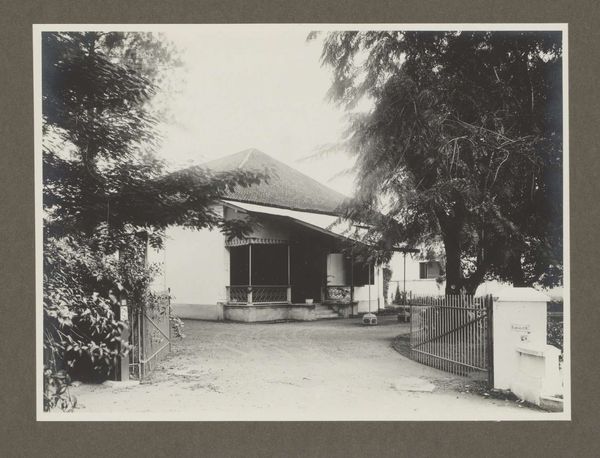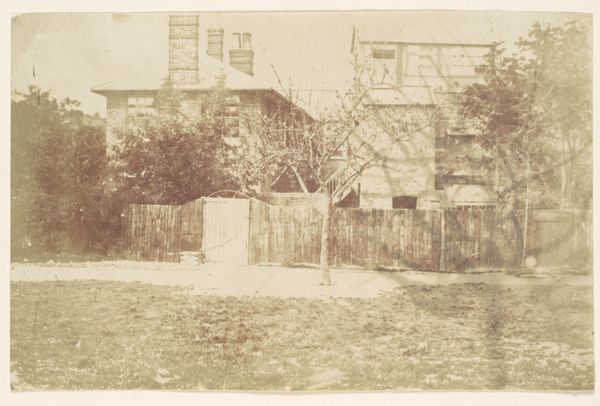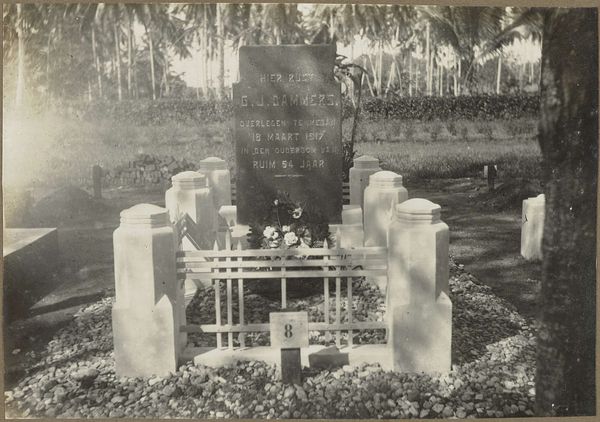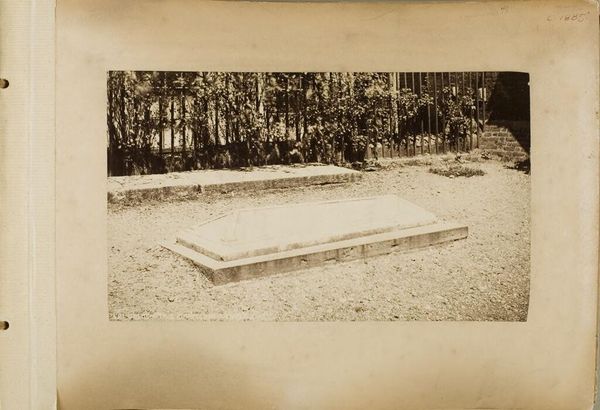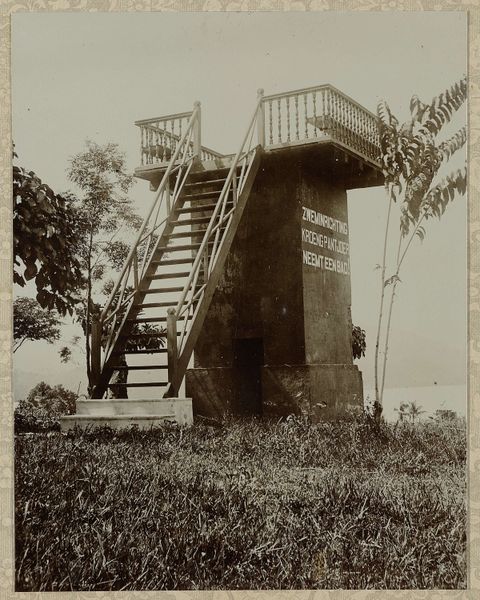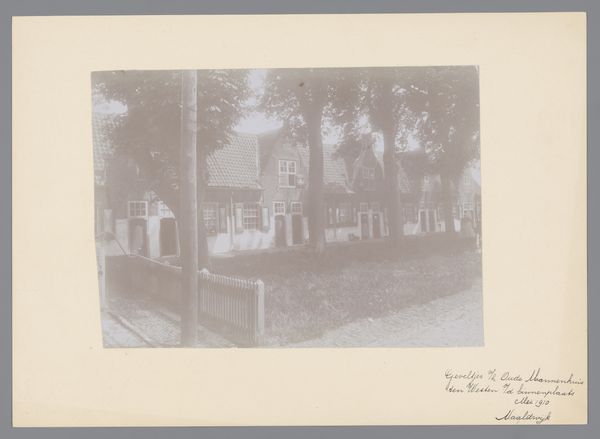
photography, architecture
#
landscape
#
photography
#
architecture
Dimensions: height 120 mm, width 172 mm
Copyright: Rijks Museum: Open Domain
Curator: At first glance, I find this scene very…quiet. A bit mournful, almost, despite the presence of sturdy architecture. Editor: This photograph, captured in 1933, showcases the "Junius-bank met plaquette in Tandjongkarang (Zuid-Sumatra)." It’s currently held in the Rijksmuseum collection, representing a moment frozen in time, in the style of landscape photography intertwined with elements of architecture. Curator: Right. It's the stone, I think. And the inscription...it feels heavy with history. Do you know anything about Junius or the political landscape that it captures? Editor: Well, thinking of it from a postcolonial lens, the photograph subtly encodes power dynamics of the time. Structures like the bank and the commemorative plaque often served as visual assertions of colonial presence and control. The “Junius” memorial likely commemorated someone of significance within the Dutch administration, reinforcing a narrative of colonial governance. Curator: It’s always unsettling, isn’t it? The way landscapes are subtly reshaped to reflect power. Did no one feel that at the time, or notice the symbolism? Look at the sturdiness of this memorial next to the more ephemeral looking building nearby...what can you tell about the architecture itself? Editor: We see examples of vernacular architectural designs which blend traditional Sumatran styles with elements introduced by colonial builders. But there's also a sense of detachment. The photo feels staged, perhaps even idealized, glossing over the everyday realities experienced by the local population under colonial rule. Curator: It really speaks to the nature of photography itself. Can it capture an objective truth? How do we reckon with its limitations? Editor: Absolutely. This makes it vital to delve deeper than the surface image. Thinking through the photo and placing it within the era that it comes from is an imperative task for current audiences. Curator: So much history compacted into one little photographic capsule. It gives you a lot to think about. Editor: It truly does, an intimate glimpse of power manifested through public works of architecture and the stories they were built to tell.
Comments
No comments
Be the first to comment and join the conversation on the ultimate creative platform.

